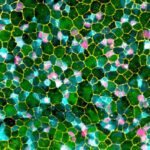Link to Pubmed [PMID] – 22105794
Glia 2012 Mar;60(3):343-57
Reactive glia, including astroglia and oligodendrocyte progenitors (OPCs) are at the core of the reaction to injury in the mammalian brain with initially beneficial and later partially adverse functions such as scar formation. Given the different glial composition in the adult zebrafish brain with radial ependymoglia but no parenchymal astrocytes, we examined the glial response to an invasive stab wound injury model in the adult zebrafish telencephalon. Strikingly, already a few days after injury the wound was closed without any scar tissue. Similar to mammals, microglia cells reacted first and accumulated close to the injury site, while neither GFAP+ radial ependymoglia nor adult OPCs were recruited to the injury site. Moreover, OPCs failed to increase their proliferation after this injury, while the number of proliferating GFAP+ glia was increased until 7 days after injury. Importantly, neurogenesis was also increased after injury, generating additional neurons recruited to the parenchyma which survived for several months. Thus, these data suggest that the specific glial environment in the adult zebrafish telencephalon is not only permissive for long-term neuronal survival, but avoids scar formation. Invasive injury in the adult zebrafish telencephalon may therefore provide a useful model to untangle the molecular mechanisms involved in these beneficial glial reactions.

